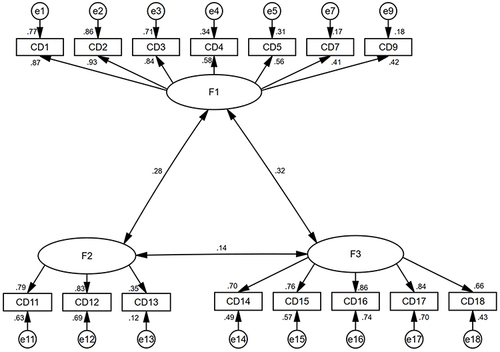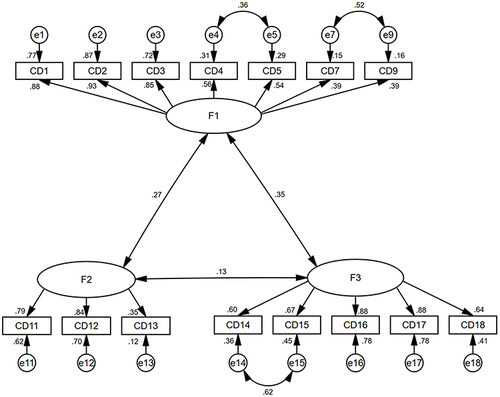Figures & data
Table 1 Factor Load and Communalities of Each Item in DTBQ of 18 Items (n=329)
Table 2 Factor Load and Communalities of Each Item in DTBQ of 15 Items (n=329)
Table 3 Evaluation Fitness of DTBQ Model
Figure 1 Standardized three-factors structural model of the Chinese version of the 18-item DTBQ (n=329); F1(Implementation burden, 7 items), F2(Flexibility burden, 3 items), and F3(BG control burden, 5 items).

Figure 2 Standardized three-factors structural model of the Chinese version of the 15-item DTBQ (n=329); F1(Implementation burden, 7 items), F2(Flexibility burden, 3 items), and F3(BG control burden, 5 items).

Table 4 Discriminant Validity Analysis of the Chinese version of the 15-item DTBQ (n = 329)
Table 5 Item-Total Score Pearson Correlation Analysis Results in the Chinese version of the 18-item DTBQ (n=329)
Table 6 Item-Total Score Pearson Correlation Analysis Results in the Chinese version of the 15-item DTBQ (n=329)
Table 7 Comparison of Cronbach’s Alpha of DTBQ
